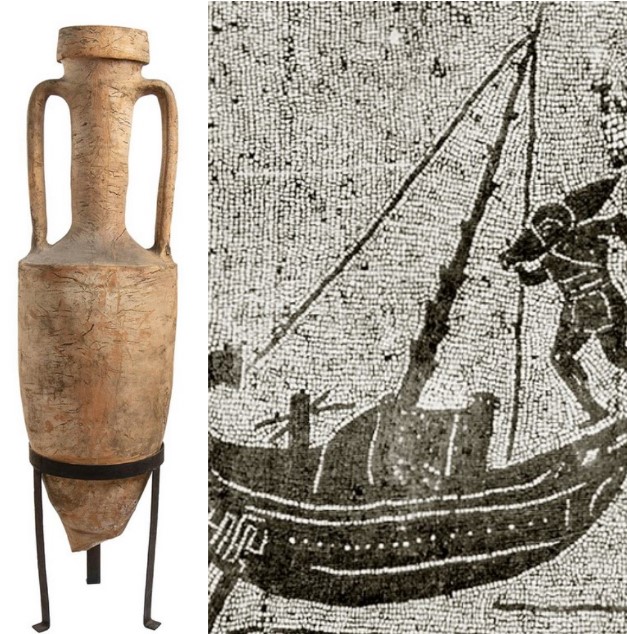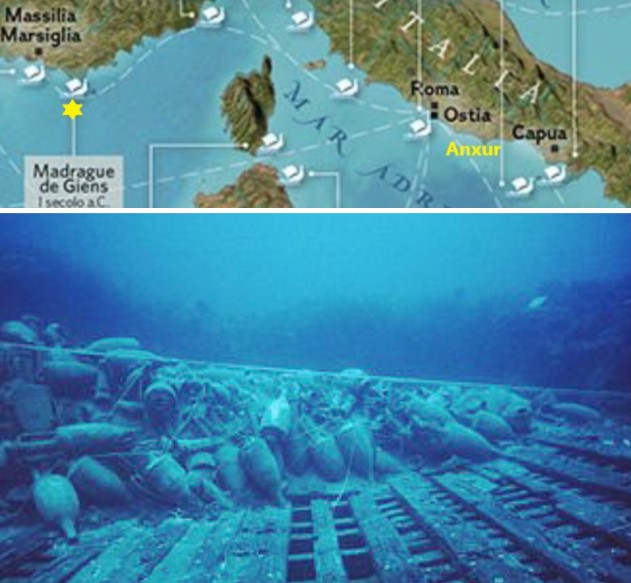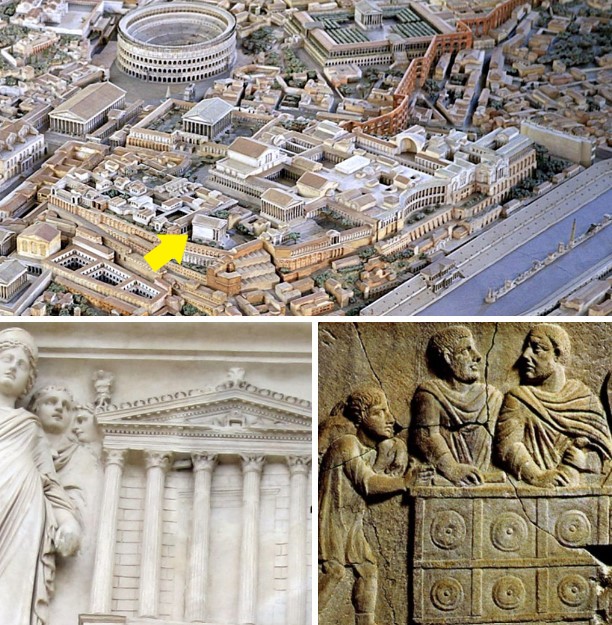Clay and Commerce: the world of Publius Veveius Papus
Rome, Italy
During the Roman era, the Mediterranean Sea served as a primary highway for transporting goods and people. Its seabed holds hundreds of ships that sailed its waters millennia ago, from Spain to the coasts of Syria and Asia Minor.
In the early 1970s, underwater excavations began at a depth of approximately 18 meters near Mandrague harbor on the northwestern coast of Giens, France. There, a large Roman oneraria (merchant vessel) was discovered, carrying 10,000 amphorae. Among these, 600 stacked in three layers were Dressel 1B amphorae, originating from the port of Anxur (the Volscian name for modern-day Terracina, Italy).
This distinctive Italic amphora type was produced in Campania, Latium, and Etruria between 70 BC and the early Augustan era. Widely distributed from the mid-2nd century BC and found across the western Mediterranean coast, it signifies the triumph of large-scale bonded-labor agriculture, with southern Etruria, southern Latium, and Campania as its most productive districts. In Gaul alone, between the mid-2nd century BC and the following century, at least 40,000,000 amphorae—roughly 100,000 hectoliters (10 million liters) of wine annually—were unloaded.
The specific amphorae from Mandrague were linked to a figlina (an ancient pottery workshop producing amphorae, typically located near cultivation zones) in Latium. This connection was made by matching workshop owner P. VEVEIUS P.F. PAPUS’ stamps with epigraphic records.

Mosaic depicting a merchant ship and a man unloading amphorae. He stands on a gangway, slightly bent under the weight of an amphora on his right shoulder, wearing a knee-length tunic. From Ancient Ostia – Dressel 1B variant amphora.
Today, the workshop lies in Canneto, near Fondi municipality, roughly 6 km from the Temple of Jupiter at Anxur. Excavations there uncovered around 200 amphorae dated to 50 BC, some bearing a rectangular cartouche stamp reading P. VEVEI.PA[PI]. This refers to Publius Veveius Papus, a member of the Papia gens. While it’s unclear if he was local or merely operated in the area, his products were undoubtedly exported across the Mediterranean. Ceramic remnants indicate Papus’ workshop remained active at least until the 1st century AD.

Map showing Mandrague de Giens (site of a 1st-century BC Roman shipwreck with one of the most significant late-republican wine cargoes ever found) and Anxur (Terracina), home to the workshop that produced amphorae recovered from the wreck (see photo below).
Anxur produced its local wine, Caecubum, so it’s uncertain whether Publius Veveius Papus’ amphorae carried the more famous Campanian wine, Falernian. The latter was undoubtedly among antiquity’s most consumed and celebrated wines, cherished in Rome and across the Empire’s provinces.
![Top: Temple of Jupiter at Anxur (Terracina); Center: Bas-relief from Cabrières-d’Aigues showing a ship transporting barrels and amphorae on display; Bottom: VEVEI.PA[PI] cartouche stamp.](../news/rome-clay-commerce-world-publius-veveius-papus-5.jpg)
Top: Temple of Jupiter at Anxur (Terracina); Center: Bas-relief from Cabrières-d’Aigues showing a ship transporting barrels and amphorae on display; Bottom: VEVEI.PA[PI] cartouche stamp.
The gentilician name Veveius is exceptionally rare, with only ten epigraphic attestations total. The most notable figure is the affluent Roman merchant Publius Veveius Papus, attested in Delos as a negotiator (businessman) and in Anxur as owner of the praedium producing wine-export amphorae. Evidence of his activities has also been found in Rome.
![Ivory tessera (3x0.8x0.7 cm), featuring a rounded appendice with a threading hole, inscribed: RVFIO VEVEI SP(ECTAVIT) K(ALENDIS) INT(ERCALARIBVS) CN(EO) PO(MPEIO) M(ARCO) LI(CINIO CRASSO) [CONSVLIBVS] II.](../news/rome-clay-commerce-world-publius-veveius-papus-2.jpg)
Ivory tessera (3x0.8x0.7 cm), featuring a rounded appendice with a threading hole, inscribed: RVFIO VEVEI SP(ECTAVIT) K(ALENDIS) INT(ERCALARIBVS) CN(EO) PO(MPEIO) M(ARCO) LI(CINIO CRASSO) [CONSVLIBVS] II.
Rufio, the bonded financial agent of Veveius, verified [the coins] on the intercalary Kalends during the second consulship of Gnaeus Pompeius and Marcus Licinius Crassus.
During archaeological excavations near the Sanctuary of Magna Mater on the Palatine, an ivory tessera nummularia (banker’s token) belonging to the bonded laborer Rufio was discovered. He lived around the late 1st century BC (60–46 BC), during the second consulship of Gn. Pompey and M. Licinius Crasso. His role was linked to the intense economic activity around the sanctuary, particularly currency exchange: Rufio served as a bonded financial manager, overseeing operations for his dominus, likely Publius Veveius Papus of the Veveia gens.

Temple of Magna Mater (Cybele), depicted as Corinthian and hexastyle with a high staircase in a Claudian-era relief, now at Villa Medici, Rome.
Rufio was one of many nummularii (financial agents, typically bonded or freed laborers) active in Rome and the provinces. Their duties extended beyond currency exchange to include deposit banking, loans, and account management, as documented in legal sources. They operated booths in high-traffic areas (e.g., forums, sanctuaries). Near some temples, including the 2nd-century BC Temple of Magna Mater on the Palatine’s northwestern slope—which attracted pilgrims from Italy and the eastern provinces—banking and credit services were permitted.
Excavation data reveals that on the intercalary Kalends (February 1st) of 55 BC, Rufio verified and sealed a money bag. His active period (60–46 BC) is corroborated by known coin finds and Palatine numismatic material, including asses, semisses, quadrantes, and denarii. This confirms the sanctuary’s bustling republican-era economy, requiring skilled bonded personnel to serve wealthy patrons conducting business there.
Via di S. Teodoro, 9, (Rome)
